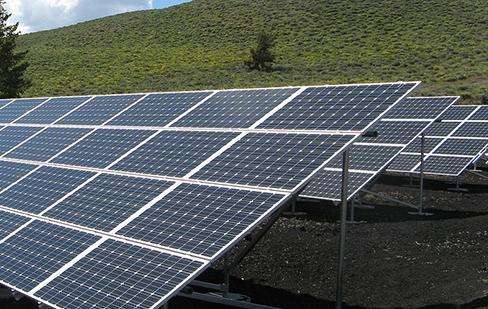Small science experiments that third graders can do include: triboelectricity, garlic sprouting experiment, punch-proof paper experiment, ice fishing, bouncing eggs , the non-wet paper, the toothpick speedboat, the rainbow bridge, the anger bottles, the floating coins, the rainbow. rain, bouncing bubbles, color changing and more.
Experiment 1: Bouncing Bubbles
Experimental materials: water, dishwashing liquid, glue, straws, gloves;
Experimental steps:
1. Prepare a mixed solution of water and dishwashing liquid in a 3:1 ratio. Use a straw to dip into the solution to make bubbles, but the bubbles burst easily;
2. glue and solution mixed in a ratio of 1:2. At this point, dip a straw into the solution and blow bubbles. Wear gloves to touch the bubbles. Bubbleswill not only be difficult to burst, but also will bounce back after being touched with your hands.
Experimental principle: The bubbles in stage 1 are prone to explosion due to water evaporation. After adding glue, they will become very sticky and the water will not evaporate easily. The strength of the bubble wrap will increase. , so it can be used in our The back of his hand jumped.
Experiment 2: Color Changes
Experimental materials: purple cabbage, hot water, several cups, sugar, lemon, baking soda, alkaline noodles, white vinegar;
< p >Experimental steps:1. Cut the purple cabbage into shreds or slices, put it in a cup, soak it in hot water, after 10 minutes only water will remain and strain the purple cabbage.
2. Prepare a cup of sugar water, lemon water, sparkling water, alkaline water, white vinegar and boiled water.
3. Pour the water in which the purple cabbage was soaked into sugar water, lemon water, soda water, alkaline water, white vinegar and boiled water. This is when you will notice that the initially colorless liquid. is all there. New colors, and the colors are different.
Experimental principle: purple cabbage contains anthocyanins. When it encounters substances with different acidity and alkalinity, a chemical reaction occurs, so the color changes overall when it encounters acidic substances, it appears blue. when confronted with alkaline substances, and appears purple in neutral liquids.
Experiment 3: Automatic rise of water
Experimental materials: candles, water, plates, glasses;
Experimental steps:
1. Fill the saucer with water;
2. Light the candle and place it in the saucer;
3. Place the glass on thea candle; When the candle goes out, watch the movement of the water.
Experimental principle: When the candle goes out, the water in the glass rises gradually and stops after reaching a certain level. Because the candle burns, it consumes the oxygen in the glass and the reduced oxygen is filled with water.
Light a lamp in the water
You need: water from the candle pool
Do this: stick a candle thicker at the bottom of the basin, pour Pour a little water so that the surface of the water is a little away from the surface of the candle (without immersing the candle). Light a candle and see if it burns below the surface of the water. Think about it: why can lights be turned on underwater? Be creative: try it, does the candle burn deeper underwater in hot water, or does it burn deeper in ice water. (Special Reminder: This experience may be dangerous and requires professional guidances of an adult.)














